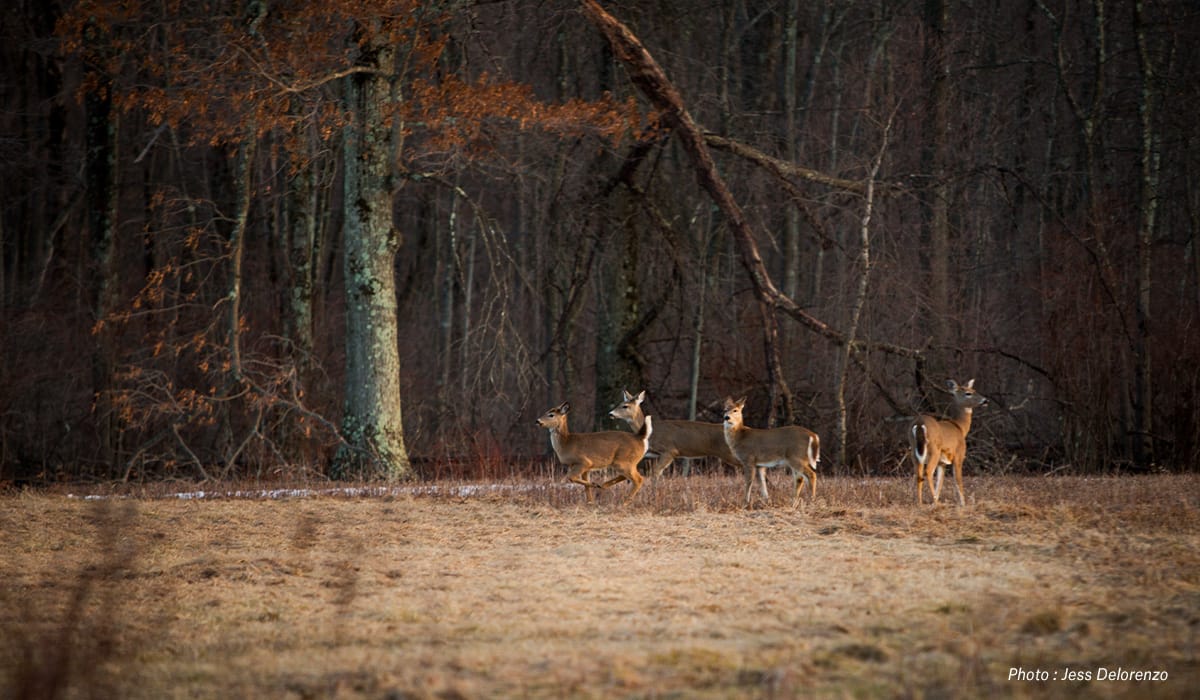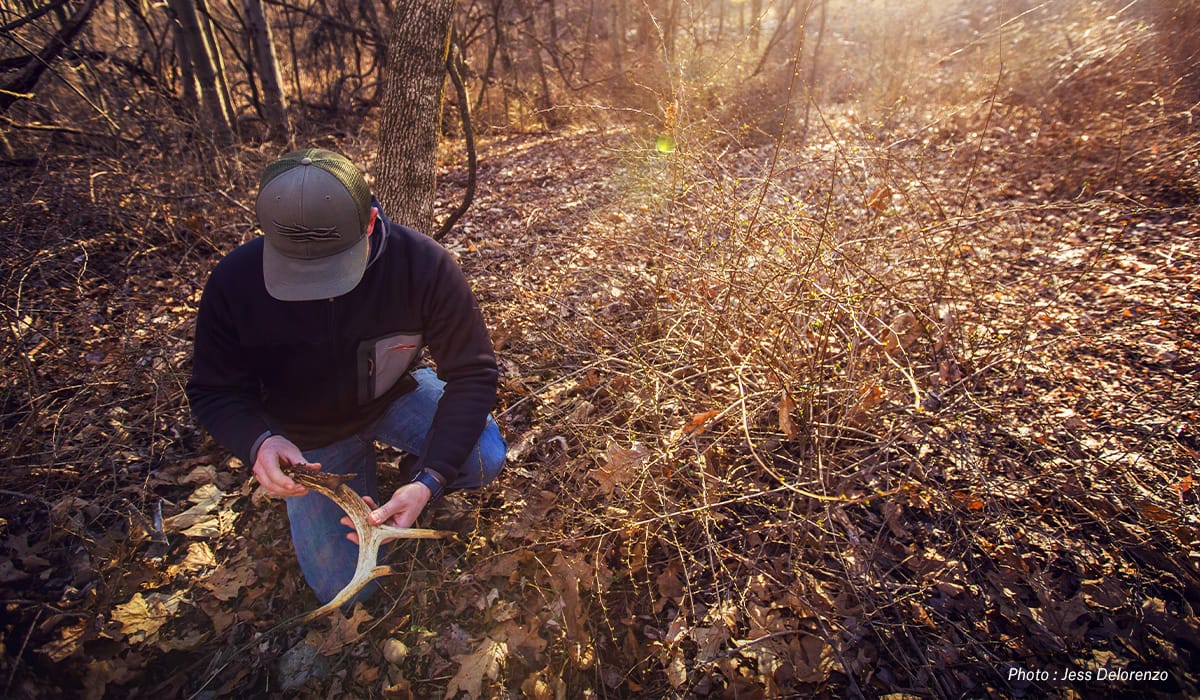Most whitetail hunters live to hunt the rut. It’s the time of year when bucks are on the move and hunters can use tactics like grunts, rattling, and scents to lure them in closer to shooting distance. The most consistently successful hunters understand rut dynamics. If you’d like to better understand those dynamics, you should know about the biology of the rut.
For this month’s “onX Whitetail Report,” we talk with one of the foremost experts on deer biology and rut behavior, Mississippi State University’s St. John Family Professor of Wildlife Management Dr. Bronson Strickland. He clearly explains the key components of why whitetails rut, why they rut when they do, and what happens biologically during the rut.
Why Do We Have the Rut When We Do?
Dr. Strickland: Over hundreds and thousands of years, when you have the rut is all based on the optimal time of year to promote fawn survival. When we think about the breeding season, whether it’s in winter or fall or hunting season, it’s all based on when a fawn is going to hit the ground and maximize its chances for survival.
For some examples, if you’re up North, say in Michigan, Wisconsin, or Canada, you’ve got a really brief window there. Fawns need to be hitting the ground by late spring or early summer because you don’t want to drop them in the snow, but you also don’t want to drop it in the middle of the summer because it’s not going to have enough time to grow sufficient body mass to be able to live through the winter. That’s why up North we see earlier ruts.
When you move down South, though, we have a lot more flexibility. We don’t have those intense selective forces down here, so you can go places, like Florida for instance, and the peak of the rut can be in August. Though down here we have more situations that might be related to flooding events.

Why Is the Rut So Condensed?
Dr. Bronson Strickland: There’s two explanations. We can go back and look at our example from the North as it relates to fawn survival and weather. But in the South we factor in another issue and that’s the “predator swamping” behavior. In a study we published about a year ago, where we looked at populations from Louisiana, Georgia, Pennsylvania, Michigan, and all over the U.S. what we saw is that “predator swamping” is a real phenomenon. What it means is that it’s to the deer’s advantage, and ultimately to the fawn’s advantage, if you’re dropped at a time when a lot more fawns are dropped on the landscape. That’s just because if you have more fawns on the ground it reduces the opportunity time for a predator.
What we found is that if a fawn is dropped before the peak or after the peak their survival relative to predation is a lot lower than that of fawns that are dropped right in the peak. Again, over time, generation after generation, it solidifies the peak time for a population.
What I think is really cool though is the conception time, or when a doe comes into heat, and that is inherited from mother to fawn. It’s literally in their DNA, so you can see the evolutionary consequence of how they pass on this information and it sustains the population at the local scale.
That’s an evolutionary story there: it’s not advantageous to an individual. If you break the norm you’re going to pay the price in terms of your survival or your offspring’s survival, so evolution has put some boundaries on that.
It’s why if you get a doe from Ohio and bring it down to Mississippi that doe is going to come into heat relative to the Ohio area, where she was born and her genetic history comes from.

The Biology of the Rut and Deer Behavior
Dr. Bronson Strickland: Now, what are the environmental cues that cause does to come into estrus? Some of it can be influenced by nutrition. Evidence seems to suggest that if a doe is in really poor condition she may come into estrus later, but the bottom line is it is triggered by photoperiod, and that is just simply the ratio of daytime hours to nighttime hours. It is not, and I stress this to hunters, affected by weather. It is affected by photoperiod.
Talking evolutionarily again, what is the cue from year to year to year that is a more reliable cue? It’s not temperature. You can always have an above-average or below-average November, but photoperiod is a very reliable indicator. More specifically, it’s when the ratio of daytime hours is starting to decrease. The shortening of daylight hours then just trips a switch in a doe.
A doe is in estrus for just two to three days, and then within the estrus period she’s in what we call “standing heat,” meaning she’s going to stand and be bred, and that may only last 12 hours out of that whole 36-hour period.
That’s why you see “the chase,” where a buck is chasing a doe but that doe will not stand for the buck yet. The buck knows this so he’s going to stay really close until she will.
On the buck’s side of the equation, the rut starts with an increase in testosterone, and that goes all the way back to when you first see antler velvet coming off. They’re going from their bachelor groups to a point where they no longer tolerate other bucks. And again, this change is also triggered by photoperiod.
Once they are in hard antler, they are reproductively viable, so they can breed at that time all the way until testosterone levels drop again and antler shedding begins, which in the South may not be until March. So they have this huge window, maybe five or six months, where they are capable of breeding. They are just waiting for that time when a doe comes into estrus.
Then we start getting into rut phases, and that’s most likely about the relative number of does within the population that are coming into heat. The number of does coming into heat also follows a bell-shaped curve, similar to the “predator swamping” example, and the center of that curve is the “peak rut,” which is generally going to be about two weeks long.
But in the “pre-rut” phase there’s always going to be some does that come into heat two weeks early. When those first few does start coming into heat that’s our “pre-rut.” And the bucks are thinking, “Alright, wake up. Here we go.” Then the bucks start moving more, roaming their territory, looking for these breeding opportunities.
Then we get into the peak of the rut, and this comes from studies with GPS collars as well as hunter observations, and oftentimes we’ll start seeing less bucks during the peak of the rut, which is counterintuitive, but that’s just because they’re locked up. They have found the female and they are not going to leave her side because she’s building up to “standing heat.” After he breeds her, he’ll move on and look for another opportunity.
~~~
Want to get the timing of your local rut dialed? Premium and Elite onX Hunt members can access our Southern Rut Heat Map.